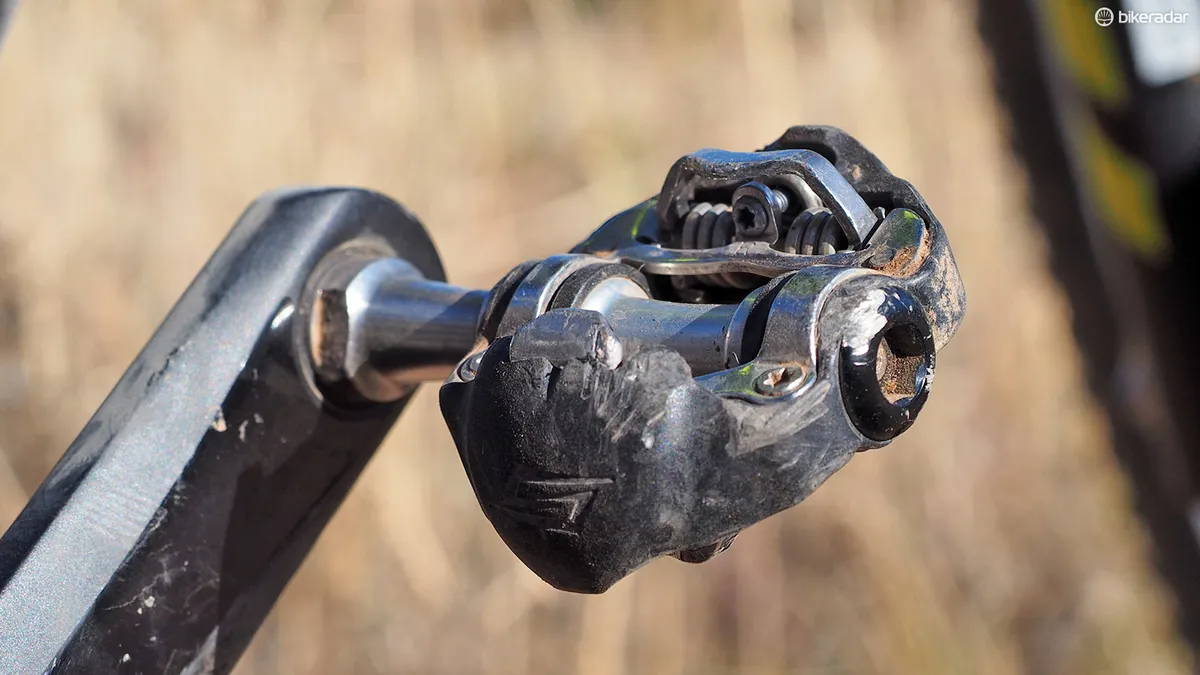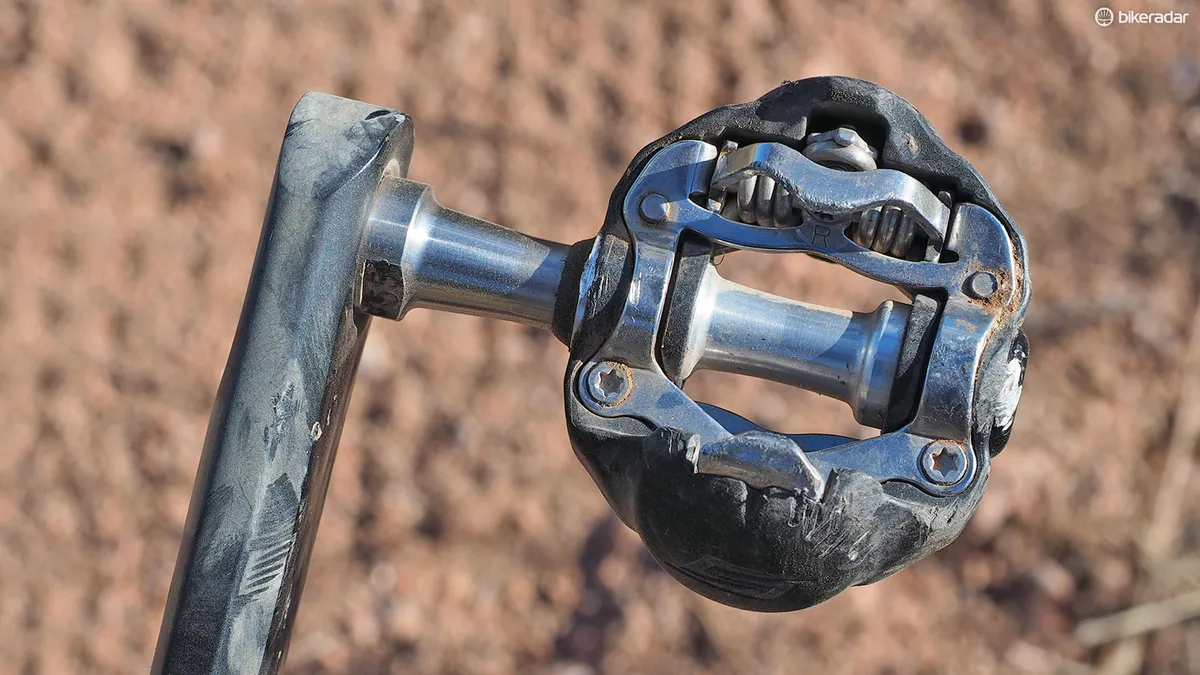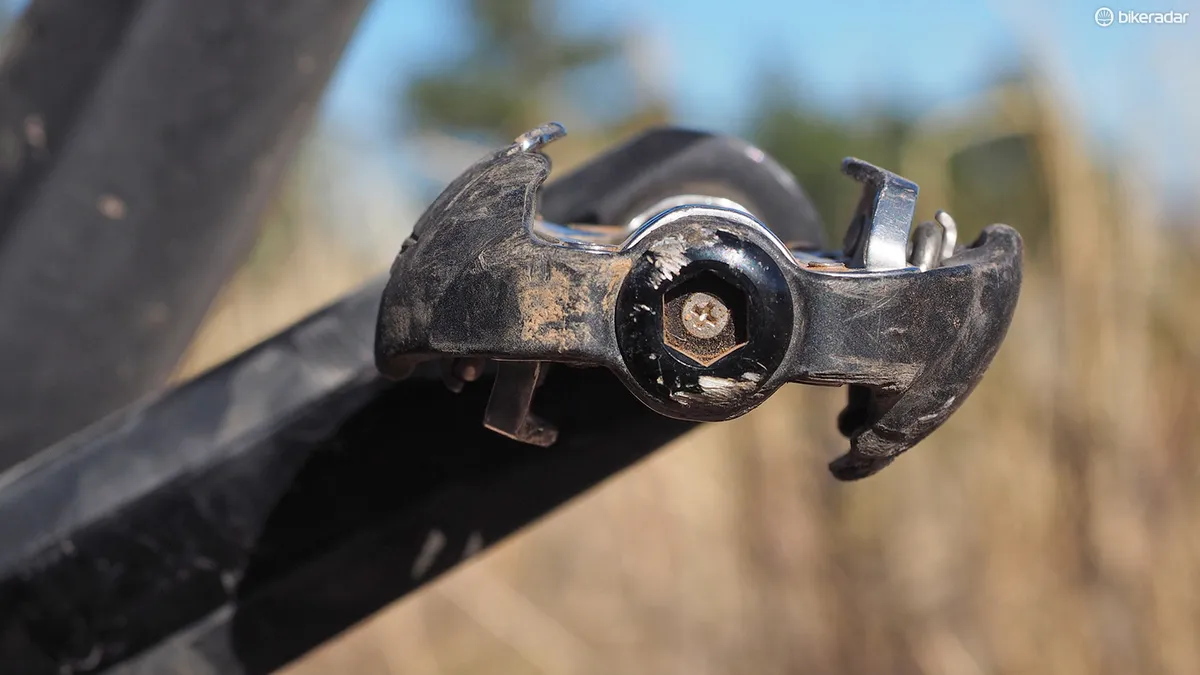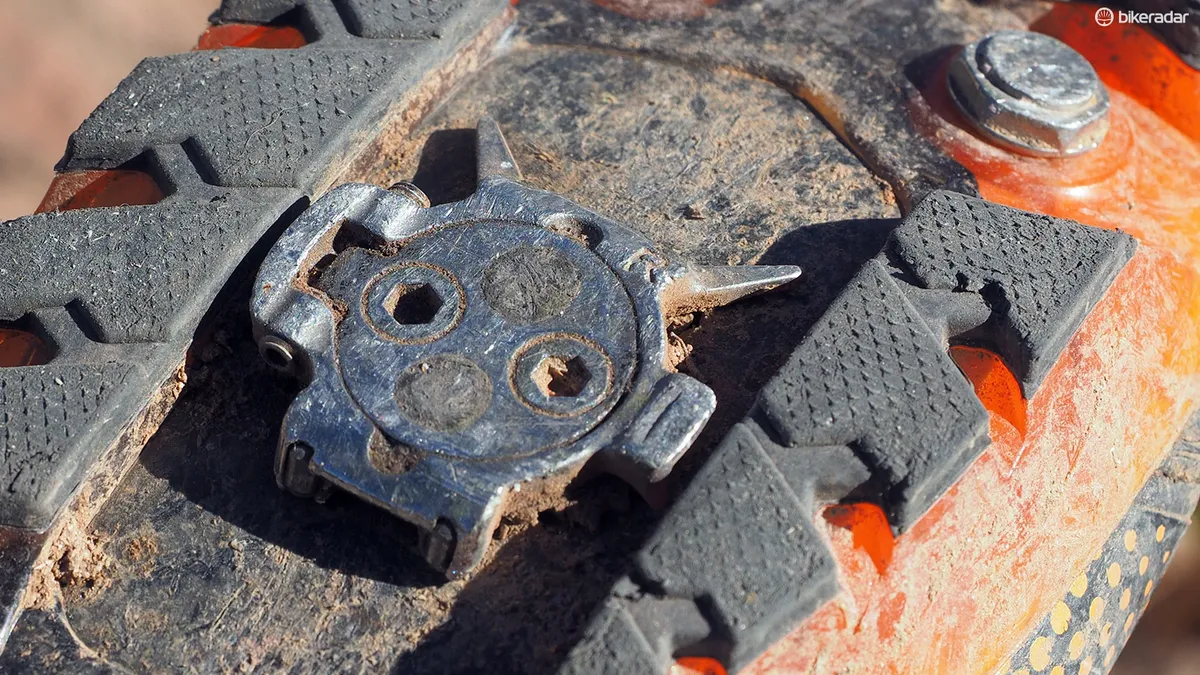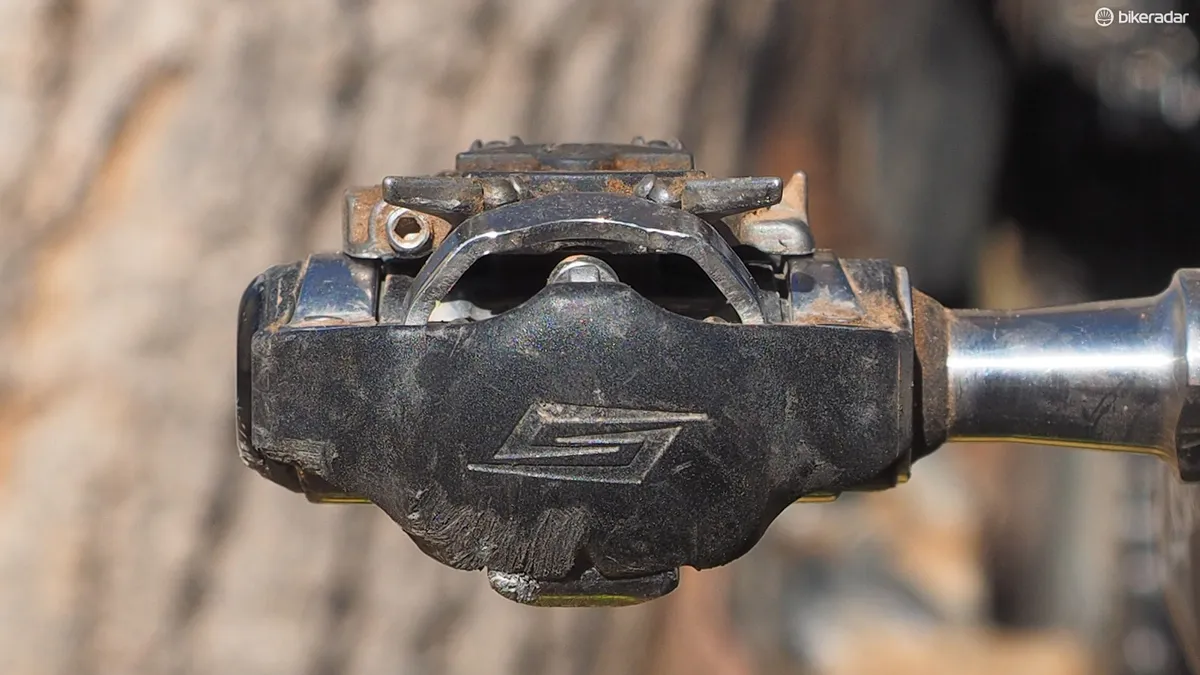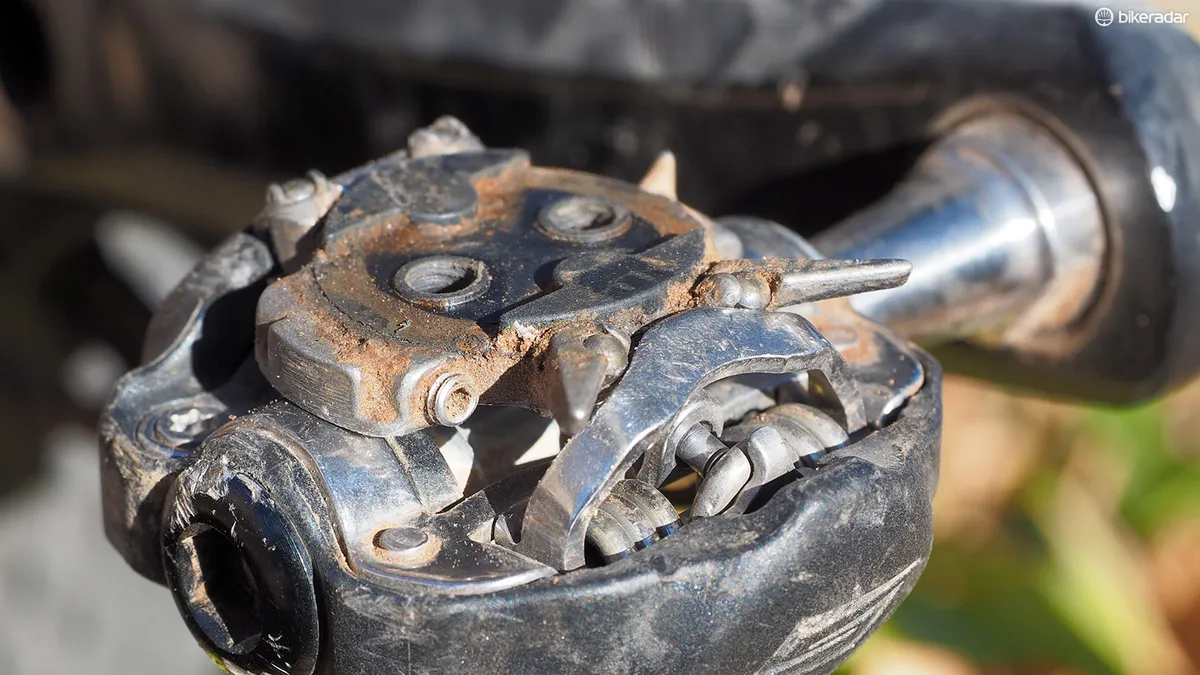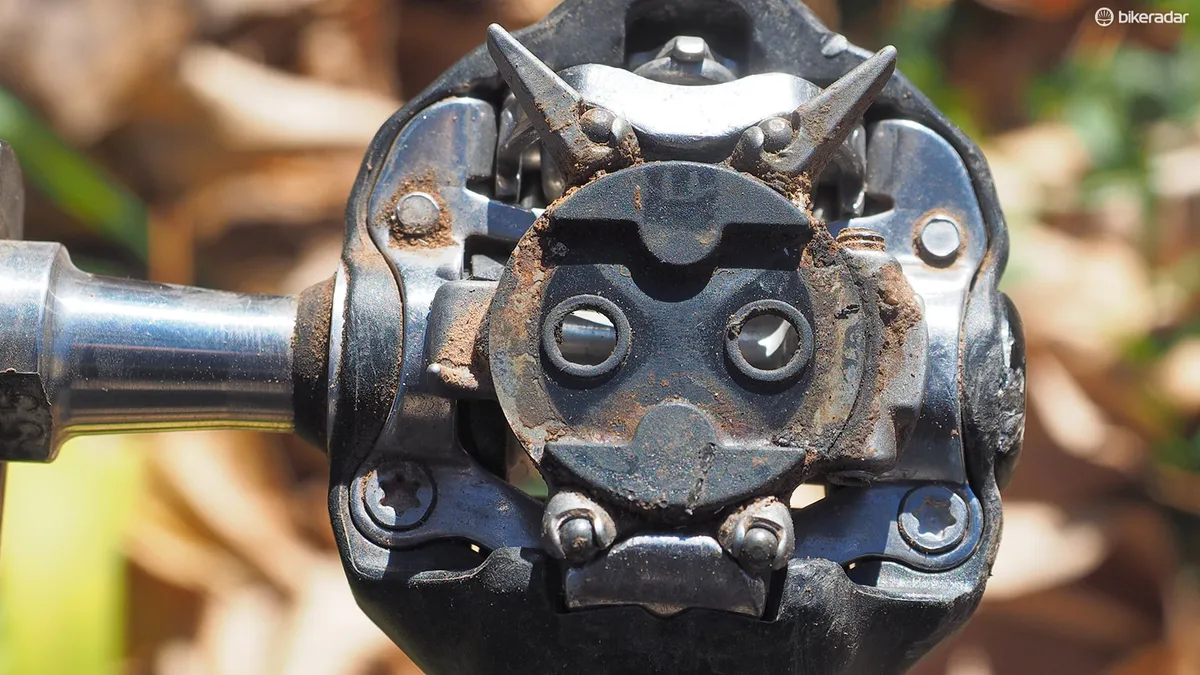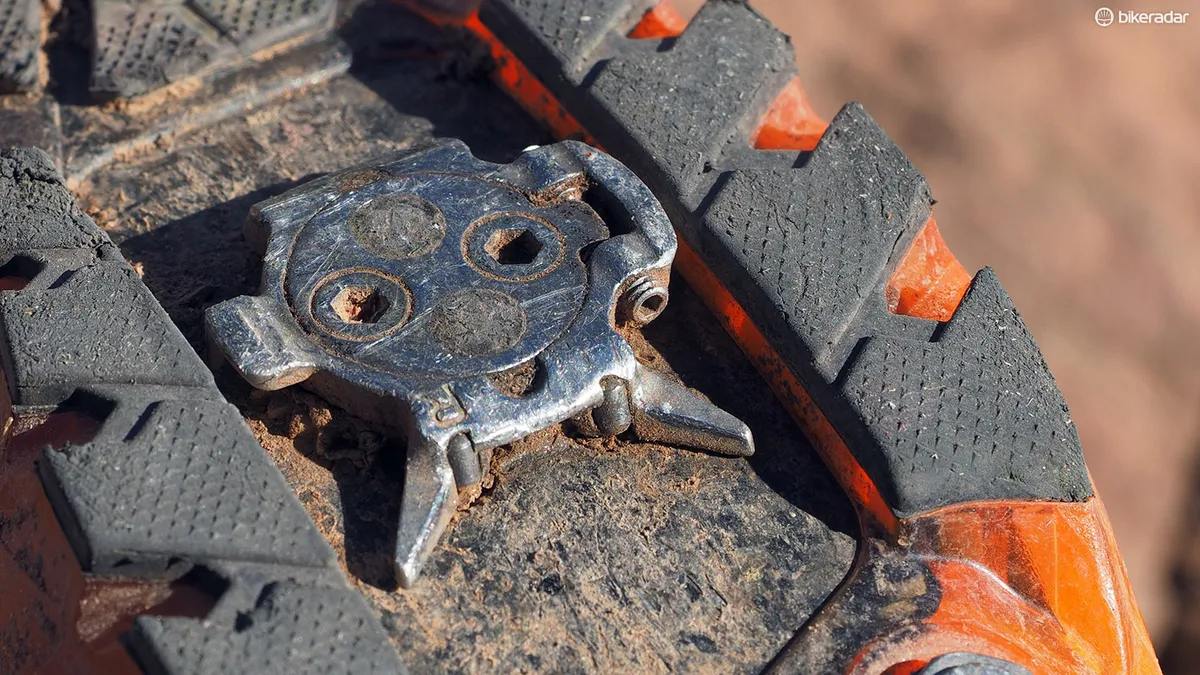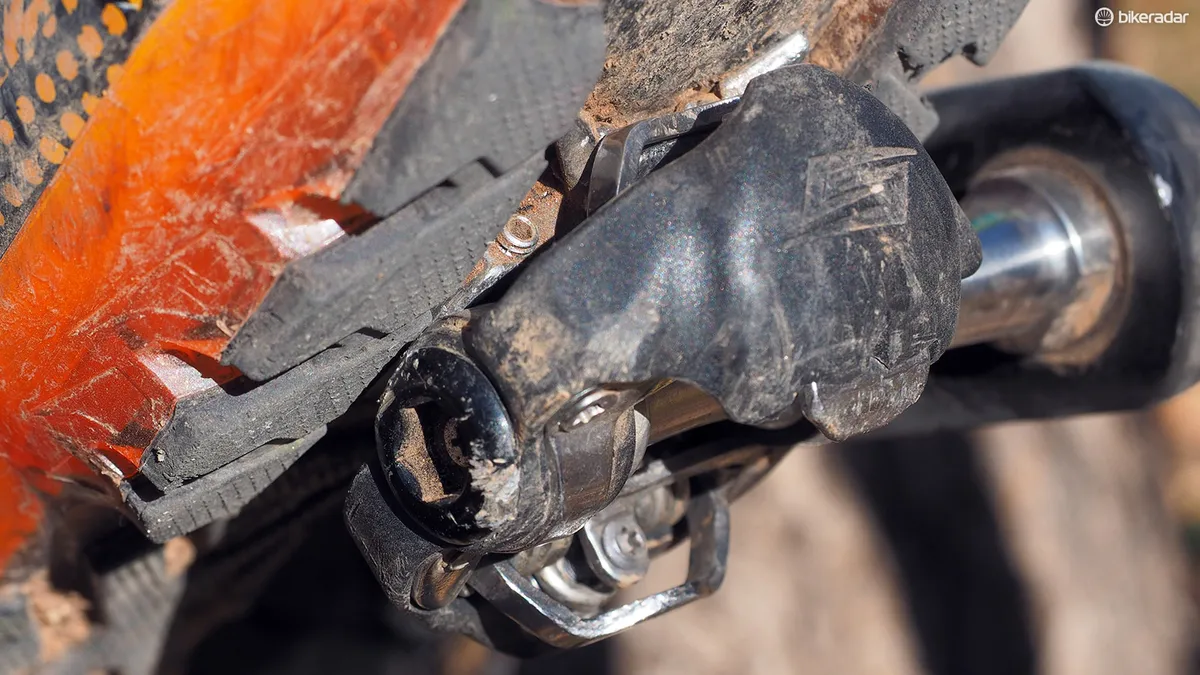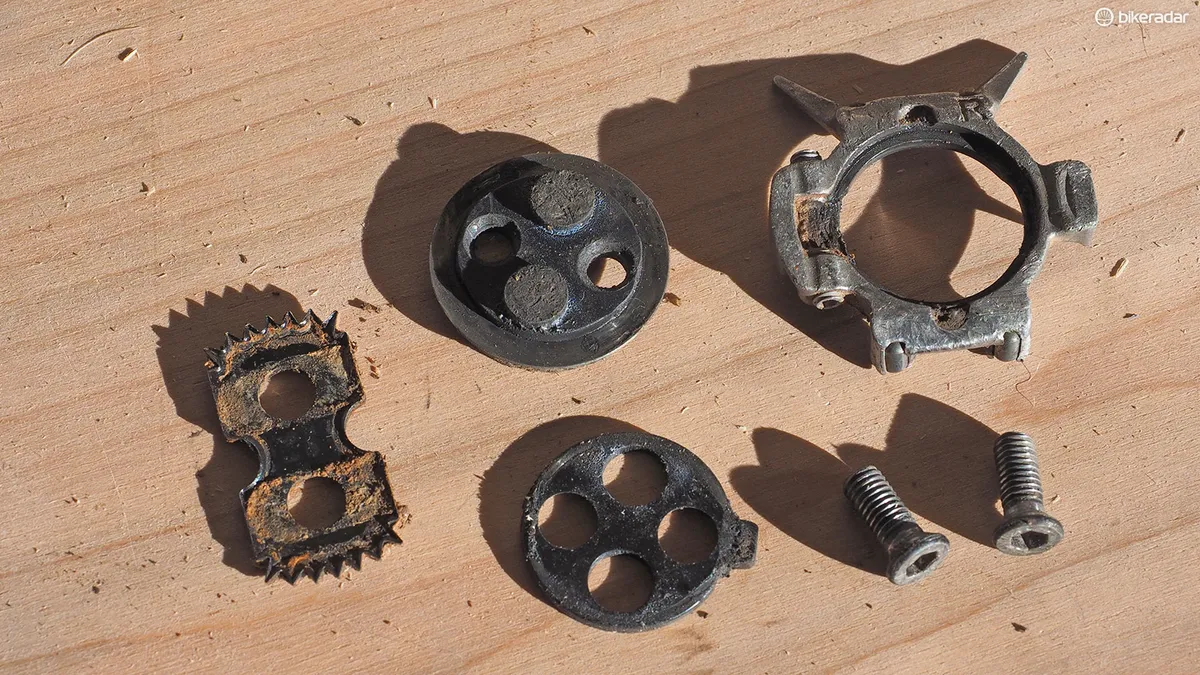Like many others, I watched with eager anticipation as Speedplay developed its long awaited mountain bike pedal, the Syzr. More than eight years in the making with one concept fully developed (but ultimately scrapped), it’s finally on the market with no shortage of promised performance and a laundry list of novel technical features. As impressive as it is on paper, though, the Syzr sadly disappoints on the trail.
The Syzr is unlike any other mountain bike pedal currently on the market and for the most part, that’s a good thing. Critically, Speedplay co-founder Richard Bryne designed it so that the rider power was directly transferred through metal-on-metal contact between the cleat and pedal with no rubber-on-pedal squishiness or vagueness.
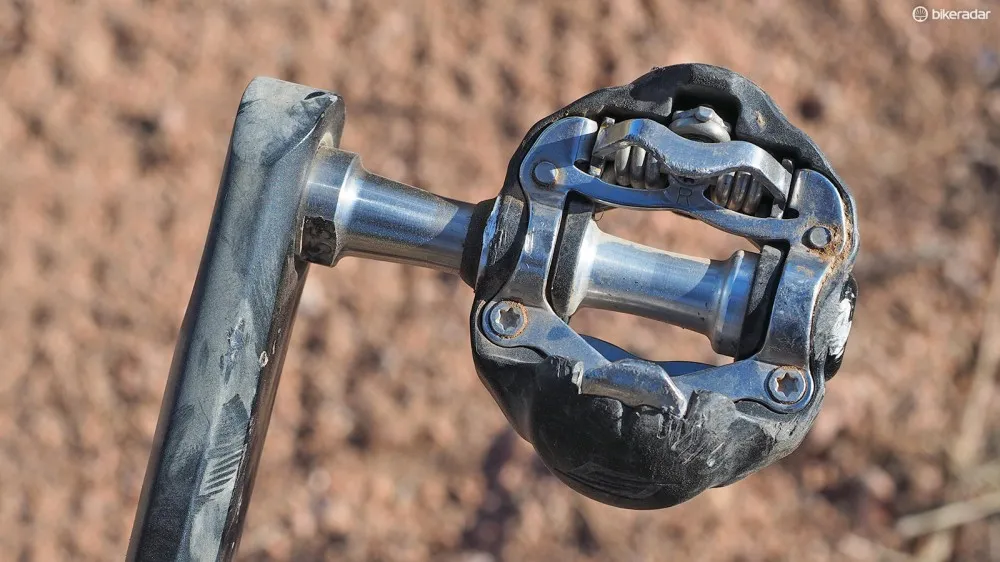
Speedplay aimed to create an entirely different kind of mountain bike pedal and largely succeeded with the long awaited Syzr
As a result, the design boasts a rock-solid connection between the pedal body and cleat that doesn’t rely at all on a big cage for shoe stability. Whereas conventional mountain bike pedals incorporate free float by building slop into the cleat-pedal interface, the Syzr instead builds precisely adjustable rotation into the cleat itself, and like the company’s Zero series of road pedals, the inboard and outboard stops are independently tunable for a custom feel up to 10 degrees of total range.
The cleat is quite the marvel in and of itself with built-in extensions that naturally guide it on to the pedal plus ceramic ‘rollers’ that Bryne says produces a more consistent release in a wide range of weather conditions. Since there’s no movement between the pedal and cleat, the cleats also last a lot longer than usual.
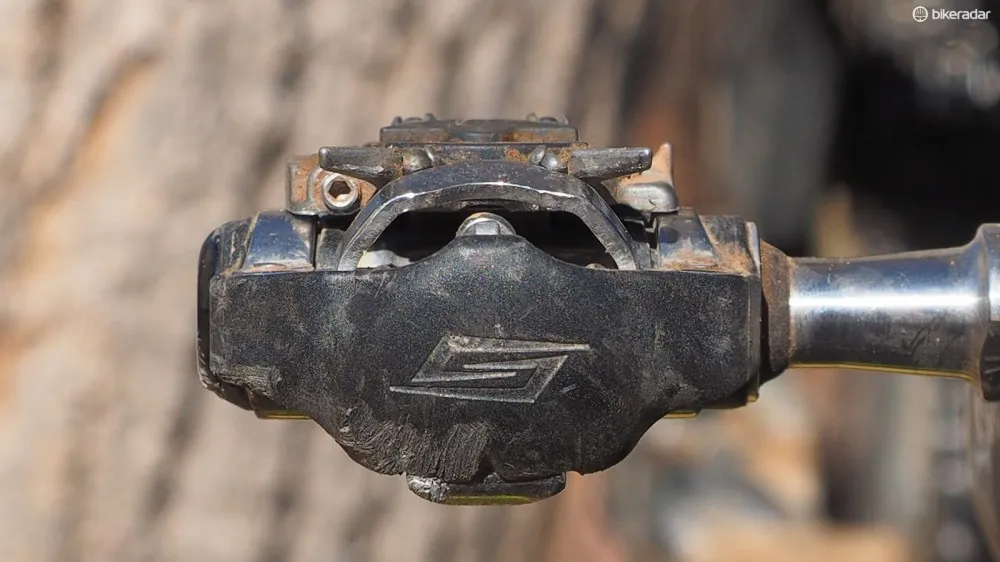
Whereas conventional pedals rely on the shoe tread for stability, Speedplay builds it directly into the cleat-pedal interface
As if that weren’t enough, the Syzr’s modular design naturally also lends itself to different platform shapes and sizes. And like Speedplay road pedals, the majority of the Syzr’s individual components are manufactured in the United States, with pedal assembly done in California.
They’re also quite light. Actual weight of our Syzr test pedals is just 311g with stainless steel spindles plus 67g for the cleats – virtually identical to Shimano’s flagship XTRs.
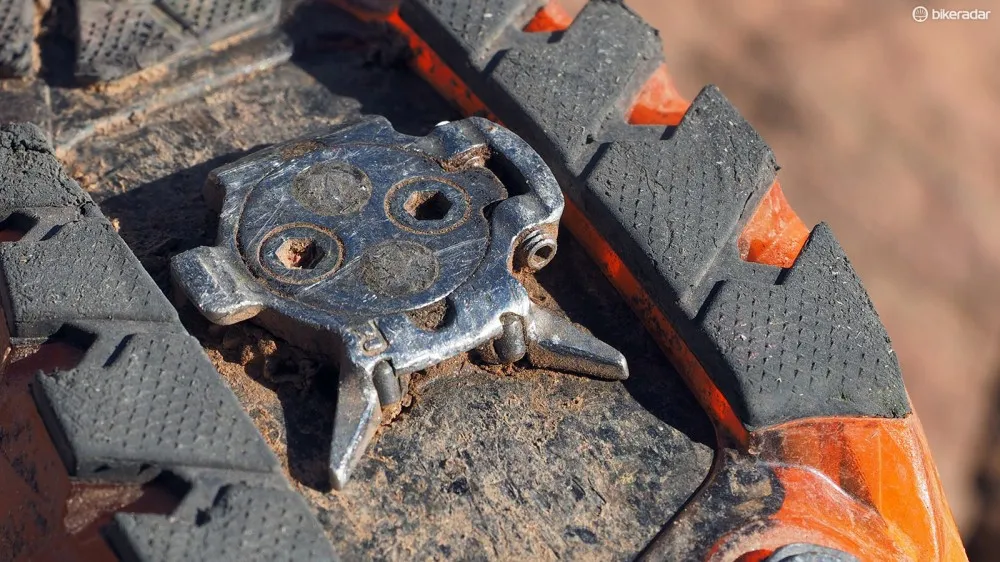
The cleats incorporate tabs to help guide your foot on to the pedal, adjustable float, and ceramic rollers that are designed to improve release consistency
All of this sounds like a dream wish list of features in a mountain bike pedals and in many cases, Speedplay’s claims ring true.
As promised, the fit between the cleat and pedal couldn’t be more ironclad. There’s no out-of-plane movement to speak of, you genuinely can feel a difference in how your power is transmitted through the metal-on-metal contact, and the rotation is so silky smooth that you suddenly wonder why other pedals feel so sloppy. In contrast to every other mountain bike pedal out there, foot stability doesn’t depend at all on how the shoe interfaces with the pedal body or the size of the body itself – it’s just rock solid no matter what.
Over nearly seven months of regular use, there’s almost no cleat wear to speak of. While countless direct hits on chunky Colorado granite have left the pedal bodies pretty heavily scarred, they're as functional as on day one.
Promises on paper vs the real world
Unfortunately, all of that promise comes up short when it comes to actually using the Syzrs on the trail – and sadly, the biggest complaints are directly attributable to the pedal’s core design attributes.
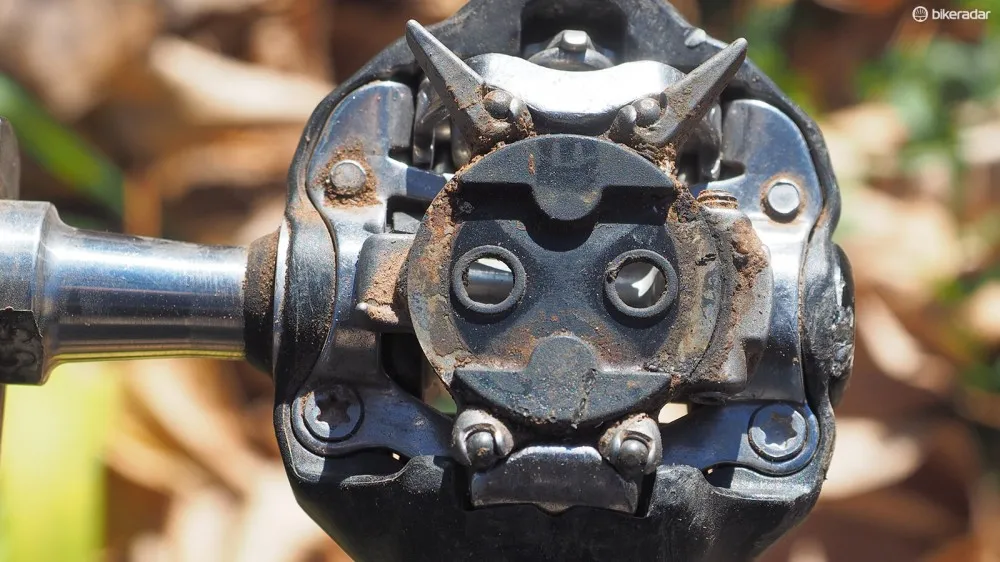
Building float into the cleat is one of the core design features of the Syzr but also its most frustrating quirk
On standard SPD (or similar) pedals, there’s a range of rotational float but the entry position is always straight ahead. On the Syzrs, though, the entry position is the same as your last exit position. For most people, this means that you clip into the pedal with a slight toes-in angle, which feels anything but natural and doesn’t exactly lend itself to quick engagement in technical terrain (or cyclocross, for that matter).
Despite allowing ample time to readjust our brains, two separate BikeRadar testers simply never got used to the motion. Performance in heavy mud is impressive but even so, clipping into the Syzrs is just flat-out slower and more awkward than with more conventional pedals.
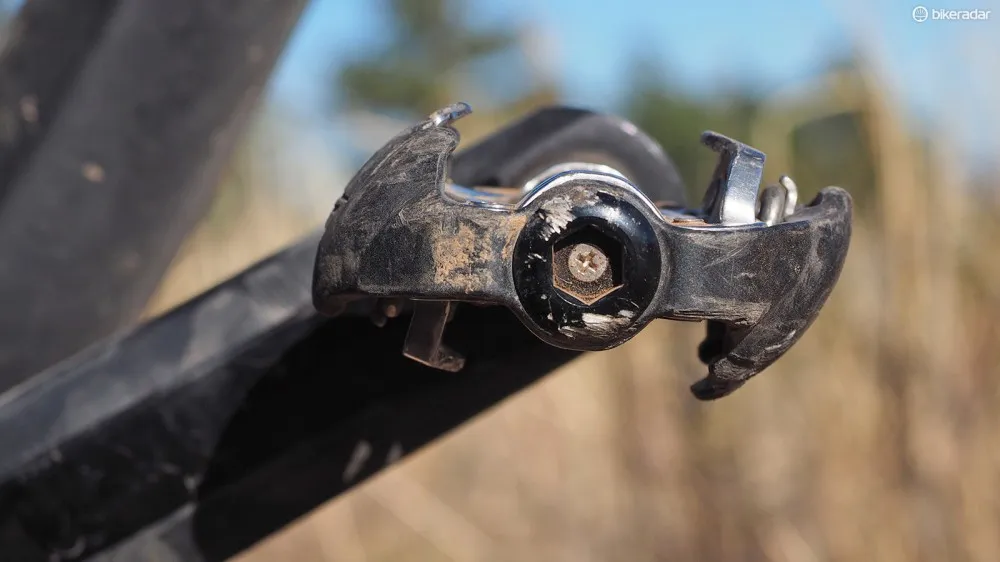
Grease ports built into the end of the body make for lightning-quick bearing overhauls
We also noticed some surprisingly inconsistent release characteristics. In dry conditions, they almost work too well. Unlike with standard SPDs, for example, which incorporate quite a bit of wiggle room between when you hit the limits of the float range and when the cleat actually disengages, the Syzrs are more absolute. Even when the release tension is cranked way up, the motion is so quick and fluid that there’s little warning when you’re about to release – plus there’s the unfortunate downside that the increased spring tension makes it harder to clip back in.
Combined with the fact that there’s no rubber-on-pedal contact by design, the inevitable accidental releases are sketchy indeed.
Despite Speedplay’s insistence otherwise, both BikeRadar testers also found the Syzr’s release performance to be anything but consistent in wet conditions, particularly when there’s even just a little grit tossed in for good measure.
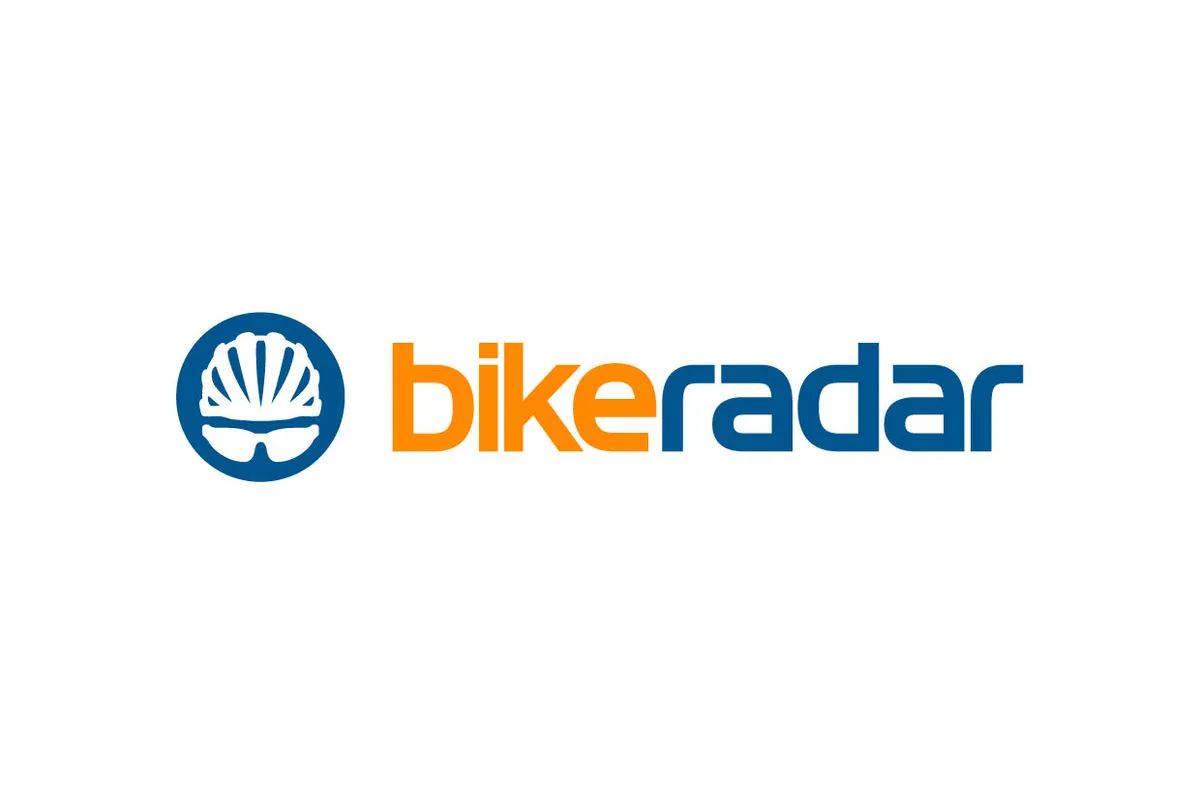
It basically doesn't matter what kind of shoes you use with the Syzrs
In particular, it was sometimes so hard to unclip that I actually fell over several times on the trail – luckily in areas where there was little chance of serious injury – and was only able to release from the pedal with far more effort than I would deem reasonable. This wasn’t a case of overly high spring tension, either; the cleat was simply stuck in the pedal.
Making matters worse was the unbearable noise. Even after the cleats were fully disassembled, greased up, and reassembled, nearly every pedal stroke in the wet was often accompanied by an embarrassing cacophony of creaks, squeaks, and groans.
More aggressive riders should note, too, that the forward-hinged mechanism tends to loosen its grip on your cleats during hard landings – the exact opposite of what you want. And if you really want to nitpick, the stack height is slightly higher than with most SPD pedals, there’s no Allen wrench fitting in the spindle (which can be inconvenient when traveling), and the big cleat doesn’t play well with some shoes (such as older Sidis).
No cigar
The Syzrs are unquestionably hyper-engineered and incredibly detailed with clearly tons of thought incorporated in their design and construction but we just never got past their quirks. We went back and forth with Speedplay several times while testing the Syzrs to try and resolve our issues and made every change suggested but to no avail – including heeding Bryne’s advice that there was a definite learning curve involved with getting the most out of these unique pedals.
On paper, these should be absolutely amazing, and in many respects, they are. Riders that primarily find themselves on non-technical XC trails that require minimal clipping in and out will invariably enjoy the superb power transfer – as will adventure-type riders who want the efficiency of a road clipless pedal but the walkability of a two-bolt cleat.
Everyday trail riding isn’t done on paper, however, and in most real world mountain biking situations, these unfortunately fall a little flat.
For more information, visit www.speedplay.com.
